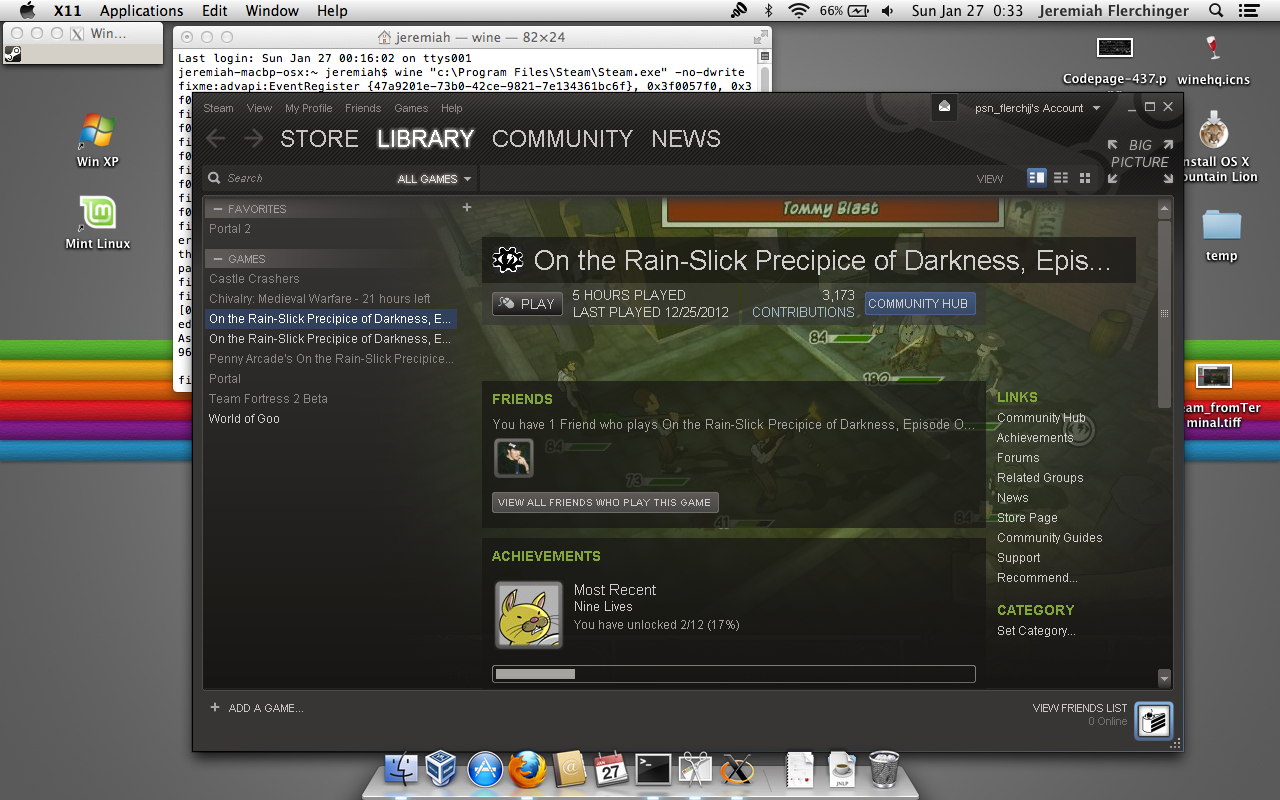Steam Installer Wine Mac

Latest Version:
Wine 5.0 LATEST
Requirements:
Mac OS X 10.8 or later
Author / Product:
Additionally, if you’re editing a file, but you want to hear the end result in the context of any post processing (perhaps you have other mixing plug-ins running in realtime), RX Monitor will be able to play that audio back in context. The RX Monitor plug-in acts as an instrument in the DAW/NLE that plays audio from RX through the driver being used by the host. This enables you to actually hear the audio you’re editing in RX without having to close your host, particularly useful if you’re using RX Connect. Izotope rx 7 comparison.
Wine Team / Wine for Mac
Old Versions:
Filename:
winehq-devel-5.0.pkg
Details:
Wine for Mac 2020 full offline installer setup for Mac
Note: this listing is for the official release of Wine, which only provides source code. If you want a version of Wine that is packaged specifically for macOS, then use WineBottler!
Translations of this page:Français (Translators, please see Discussion page.)
Install Steam. Also available on: Learn more Access Games Instantly With nearly 30,000 games from AAA to indie and everything in-between. Enjoy exclusive deals, automatic game updates, and other great perks. Browse the Store Join the Community Meet new people, join groups, form clans, chat in. Jan 15, 2020 Wine (Wine is not an emulator) is an excellent program that allows you to run Windows programs and games on Linux and macOS. How to Install Wine on Mac OS Mojave You can use Wine to run Windows programs on your Mac because this is both free and specific. There are other programs that allow you to run Windows applications on macOS.
Installing WineHQ packages
Official WineHQ packages of the development and stable branches are available for macOS 10.8 to 10.14 (Wine won't work on macOS Catalina 10.15). Please test these packages and report any bugs at http://bugs.winehq.org.
Prerequisites:
- XQuartz >= 2.7.7
- Gatekeeper must not be set to block unsigned packages.
Installing:
Both .pkg files and tarball archives are available at https://dl.winehq.org/wine-builds/macosx/download.html.
Installing from a .pkg file is recommended for inexperienced users.
To install from a .pkg file, double-click on the package, and the usual macOS installer wizard should open. The process should be self-explanatory. It is possible to install the package either for all users (needs administrator privileges), or just for your current user. After the installation is finished, you should find an entry 'Wine Staging' or 'Wine Devel' in your Launchpad. By clicking on it, a new Terminal window opens with a short introduction into some important wine commands. You can now directly start wine/winecfg/.. from the Terminal, as the PATH variable is set correctly. For user convenience, the package also associates itself with all *.exe files, which means you can run windows executables just by double-clicking on them.
To install from a tarball archive, simply unpack it into any directory. There is no need to set DYLD_* environment variables; all paths are relative, so it should work as long as the directory structure is preserved (you can skip the /usr prefix though using --strip-components 1).
For more information, see https://www.winehq.org/pipermail/wine-devel/2015-December/110990.html and https://www.winehq.org/pipermail/wine-devel/2016-January/111010.html.
Installing Winehq packages using homebrew
Winehq packages can be installed using homebrew
XQuartz can be installed using;
To install wine the following command can be used;
wine-stable, wine-devel or wine-staging packages can be installed using the above example.The advantage of installing via homebrew means wine is available from a standard terminal session
Building Wine
See Building Wine on macOS
Uninstalling Wine
- Remove the source tree and binaries.

Using Homebrew:
Using MacPorts, uninstall the wine package you previously installed:
Replace wine with wine-devel if you installed the development version.
Using Fink:
Replace wine with wine-dev if you installed the development version.
Otherwise and if you used `sudo make install`, revert it:
Then simply delete your local Wine source code directory:
- Clean-up pseudo C: drive and registry entries as well as all programs installed to C:
- Check the hidden directory `$HOME/.local/` where Wine stores some desktop menu entries and icon files as it interoperates with the X.Org Foundation and the Free Desktop.
Note: Files in this directory are unused on macOS unless you use a UNIX window manager and other X11 applications instead of the native MacOS apps.
Third Party Versions
Xquartz
Third party versions of Wine, such as Wineskin, Winebottler, and PlayOnMac, are not supported by WineHQ. If you are using one of those products, please retest in plain Wine before filing bugs, submitting AppDB test reports, or asking for help on the forum or in IRC.